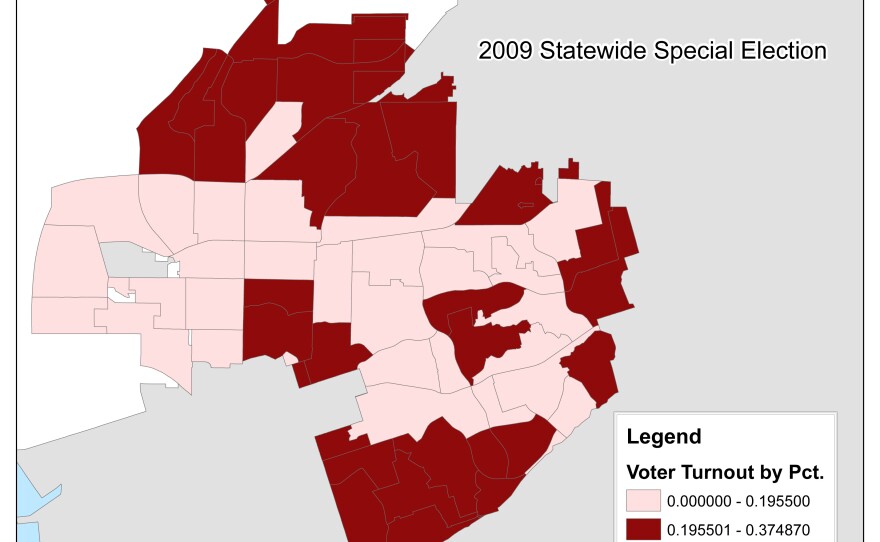City Council District 4 voting results show more than which two candidates came out on top. An analysis from the National University System Institute for Policy Research on who voted and where reveals some surprising shifts in San Diego neighborhoods.

The Paradise Hills neighborhood in Southeast San Diego used to have high voter turnout, even in a 2009 statewide special election. But when the neighborhood voted for a new city councilmember last month, turnout dropped.
Vince Vasquez, a senior policy analyst for the research institute, said that change isn’t because voters stopped voting. More likely they moved to other neighborhoods, possibly driven out by foreclosures.
“What we might be seeing here in Paradise Hills is a number of Caucasian families and homeowners may have actually lost their home in a disproportionate manner in these neighborhoods, left the neighborhood and then moving in were Asian, as well as perhaps immigrants and other ethnic groups," he said. "And those groups have lower voting turnout percentages.”
Vasquez said those southern neighborhoods are more predominantly Asian and Latino. And, he said, they mostly didn’t vote for either of the two candidates still in the election: Dwayne Crenshaw and Myrtle Cole. That means Cole and Crenshaw will have to hustle to reach those neighborhoods before the May 21 election.
“You do have quite a number of neighborhoods where the message of those candidates did not resonate with them," he said. "And it’s a very short time to the next election. It really is going to be a sprint until May. And it remains to be seen who has the better ground game. Also, get out the vote is going to be something that’s very important.”
Because Cole was endorsed by the San Diego County Democratic Party, she will have access to their resources, including funds for member communications and volunteers to walk precincts, Vasquez said. But Crenshaw's support in the primary was spread more evenly across the district, which could mean it will be easier for him to appeal to new voters.
"It shows pervasiveness and popularity of his message," Vasquez said. "The burden on Crenshaw will be to piece together that coalition."
Cole dominated African American and Latino precincts, he said.
Another interesting result from the analysis was that about 70 percent of people voted by mail well ahead of the primary, Vasquez said. That’s typically a trait of highly involved and knowledgeable voters.
Early voting also means that many had mailed in their ballots before a controversial San Diego Voice & Viewpoint editorial stated that Crenshaw's "openly confessed gay lifestyle is at odds with a great deal of the district’s African American residents."
While the editorial ruffled many feathers, it may not have had much of an impact on the actual election, Vasquez said.







